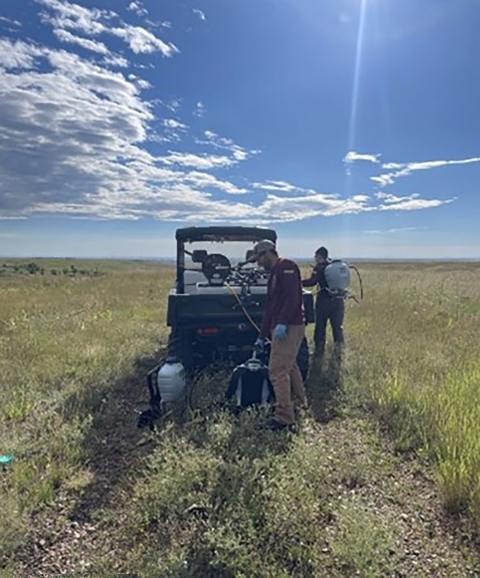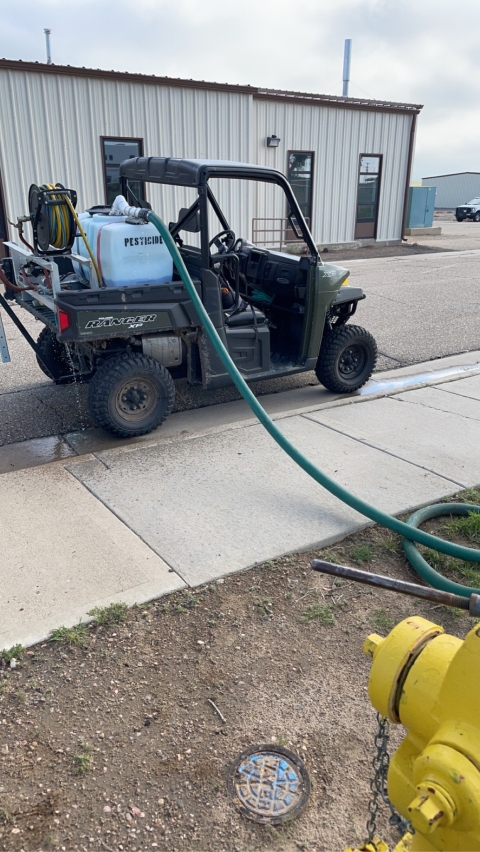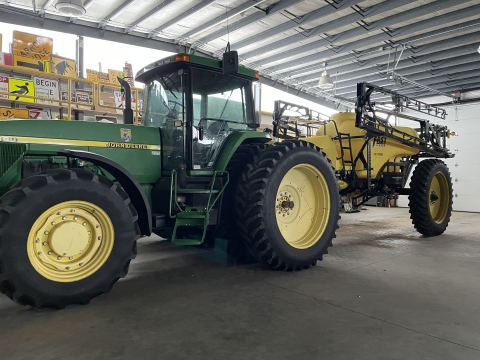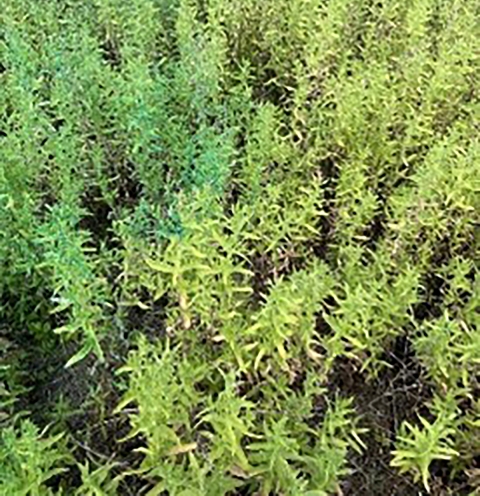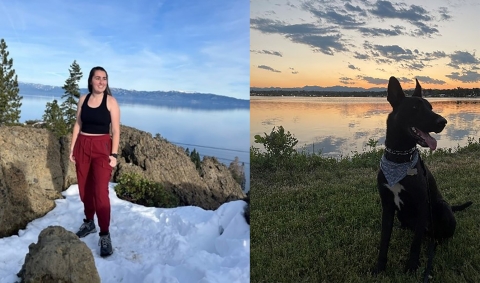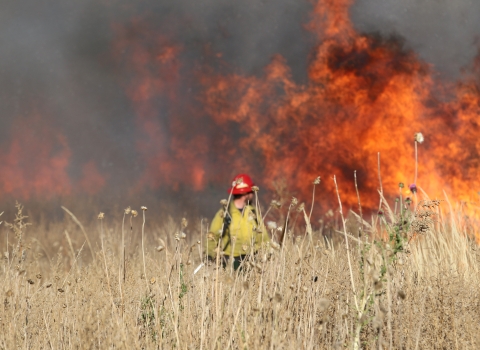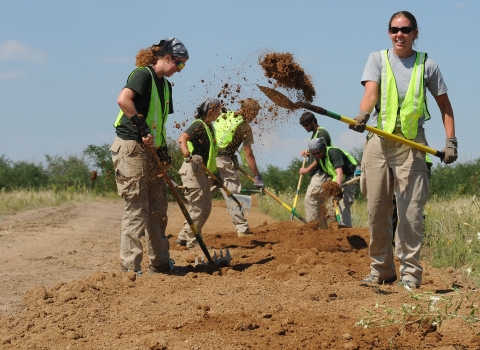Before and After Fire Strikes
You are visiting Denver, Colorado and decide to take a day trip to the Rocky Mountain Arsenal National Wildlife Refuge (RMA). While walking up to RMA, you notice flowering plants and grasses as far as the eye can see.
Upon closer inspection you see there are both native and invasive plants. Native plants are those that have historically grown in an area prior to human intervention, having evolved in tandem with the landscape. Invasive plants have been unnaturally introduced to an ecosystem by human intervention.
The native vegetation grows sporadically across the field, while the invasive plants tend to be in large dense clusters. The invasive plants outcompete the plants that are native by taking up all the available space and leaving no room for the native plants to grow.
Suddenly, a storm rolls in and you see a bright flash as a lightning strike hits the field, starting a small fire.
How do you think the fire will spread? Will it move more easily through the dense vegetation (invasive plants) or through the sporadically growing vegetation (native plants)?
The fire will move more easily through the dense invasive plants. Native grasses are more fire resilient than the invasive grasses, and native forbs (another word for flowering plants) grow farther apart making the fire less likely to spread quickly.
On the other hand, invasive forbs tend to grow in dense patches, which is great fuel for a potential fire. The invasive grasses mature quicker and therefore are drier than the native grasses. The dry invasive grasses cause the fire to burn more intensely across the field. The dense patches of invasive forbs and the dry expanses of invasive grasses combine to produce a fuel source that will burn hotter and cause the wildfire to spread quickly.
Chemistry in Play
Invasive grasses will outcompete native grasses in the field and will be more prevalent without intervention.
Now what does this have to do with chemistry?
We use herbicides to kill the invasive plants, allowing native vegetation to flourish, which in turn mitigates the intensity of a wildfire by reducing the density of this vegetation.
Application Methods
There are different methods to applying herbicides based on the area you are trying to cover and the terrain you are spraying in.
Backpack Spraying
Backpack sprayers allow us to spray individual plants and avoid the surrounding native plants. Backpack spraying is also helpful in rough terrain where our UTV or large equipment cannot access due to sensitive habitat or muddy/ wet areas where equipment may get stuck.
UTV Spraying
The UTV can be utilized in two different ways: the spray gun hose attachment and the boom spray rig. The spray gun can spray individual plants, like a backpack sprayer. The boom sprayer on the back sprays the herbicide over a larger area in a shorter amount of time where invasive plants are more prevalent and densely populated.
Fast Spraying
The final approach for applying herbicides at RMA is “fast spraying” with a tractor spray rig. This involves a large tank of herbicide and a wide spray boom that is attached to the back of a tractor. This method covers the most area for when acres of land are densely covered in invasive species invasive species
An invasive species is any plant or animal that has spread or been introduced into a new area where they are, or could, cause harm to the environment, economy, or human, animal, or plant health. Their unwelcome presence can destroy ecosystems and cost millions of dollars.
Learn more about invasive species .
And safety comes first!
There is a blue dye added to every herbicide used at RMA which helps distinguish what plants have been sprayed and which ones have not. When there is a group of people all working together in the same area, this dye is important as a visual indicator so that we don’t use any more herbicide than needed.
A Holistic Approach
Herbicides are just one important way that invasive plants are kept under control at RMA. We also control these plants through prescribed burns, mechanically pulling, and mowing.
When managing for fire, we utilize all these methods together to maintain the health of the landscape for the benefit of wildlife and people.
And the future of wildfire management is looking bright, as funding from the Bipartisan Infrastructure Law continues to support preparation and response to wildfires using this holistic approach.
About the Author
Hello! My name is Jenna McNurlan, and I am originally from Westfield, Indiana. I graduated from Purdue University in December of 2021 with a bachelor’s in Animal Science and started my travels shortly after. I lived in Philadelphia for most of 2022 as a Veterinary Assistant, and moved to Denver in April of 2023. I have been traveling with my pup, Dakota, by my side trying to explore as much of the country as I can.

